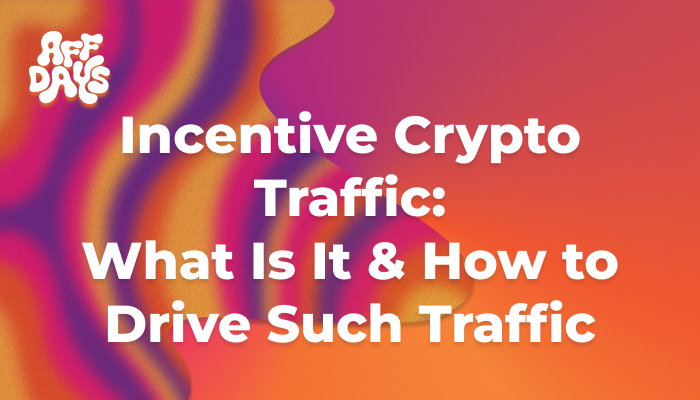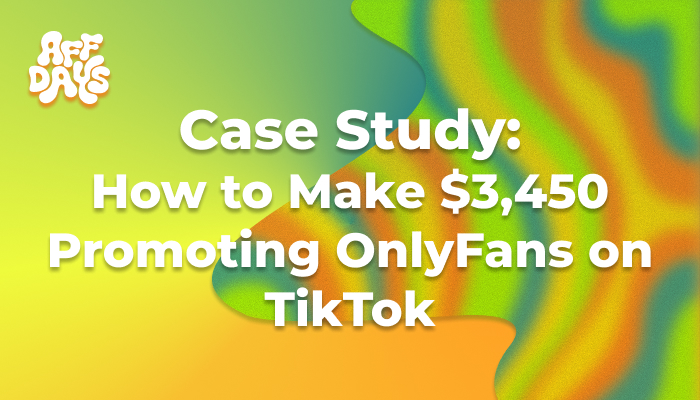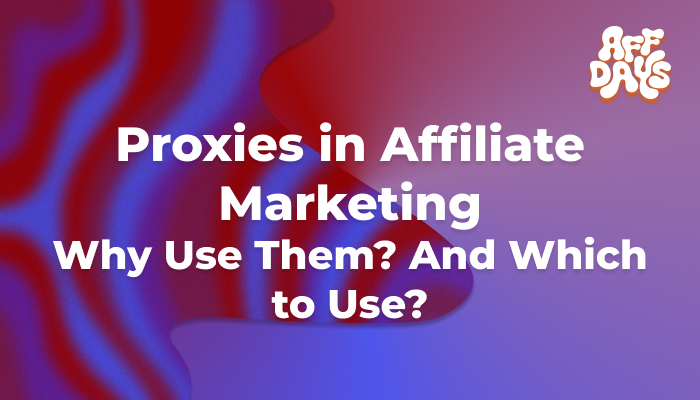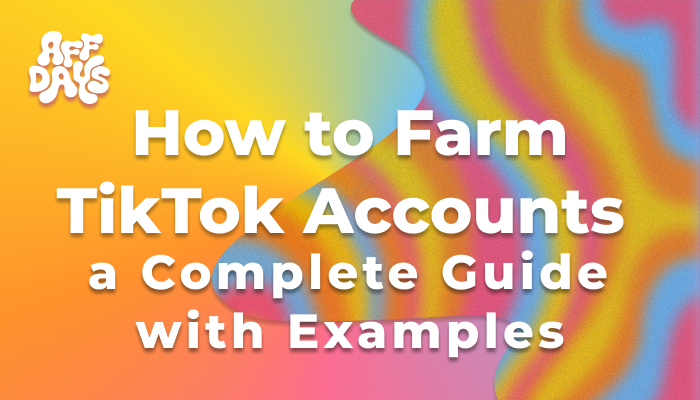The cryptocurrency space is rapidly evolving, reaching a growing audience each year. Crypto offers have long been part of affiliate marketing, and affiliates keep discovering new ways to drive traffic to them. This is how incentive traffic in crypto emerged — a direction we’ll explore in today’s article. But first, let’s explain what such traffic is and how it works in this context.
The Concept of Incentive Traffic and Its Use In Crypto
Incentive (also called motivated) traffic is a method of attracting users to offers with a deposit system. The user is invited to top up their balance and follow a specific algorithm on the platform, after which they are promised a return that significantly exceeds their investment.
The so-called algorithm — the sequence of steps in a slot or a series of bets on certain events — plays a key role in this strategy. An affiliate can invent it from scratch or base it on some kind of insider knowledge, but in the vast majority of cases found online, it’s the former.
Pioneers of such traffic were gambling affiliates: this model fit perfectly into the online casino space, which is inherently unpredictable and never guarantees results. Later, betting, finance, and binary options joined the trend — followed by crypto.
Pros and Cons of Such Traffic
The main advantage of this type of traffic, regardless of the vertical, is that they provide predictable profitability. This is very different from traffic to, say, gambling apps: ROI may reach triple digits, but profits aren’t guaranteed. Meanwhile, the overall earnings-focused approach will reliably convert a small percentage of users, some of whom will fund their accounts and begin following the algorithm.
Another advantage here is building a relationship with the user, whose contact remains and is always accessible on the affiliate’s working page. There are many offers, and the user’s desire to make money has no limits: at any point, you can redirect a user (client) to another crypto platform and receive a commission.
As for the downsides, the first is obvious: low lead quality. Advertisers want solvent clients, while incentivized players quickly burn out and stop trying after one or two deposits. As a result, to maintain a decent Retention Rate, you’ll have to carefully work the traffic, which requires additional time and money.
Many advertisers view such traffic, like in other verticals, as fraud or something very close to it. Therefore, the number of offers available for such traffic is always smaller than the total number of platforms that issue caps for regular campaigns.
You can drive such traffic from Twitter, and here’s where we explained it.
How to Drive Such Traffic
Generally, this type of traffic capitalizes on people’s desire to earn money effortlessly. This approach isn’t far from gambling or betting — the “hook” is a visually appealing promise of profit shown to the user after they click a link. Here’s an example of a news-based approach — you don’t need to watch the full video to understand what its creators are offering to potential clients:
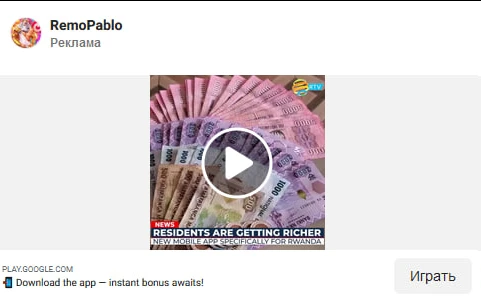
Ad creatives can also be more specific. A trader promoting signals may present all the information upfront — only working signals and no losses:
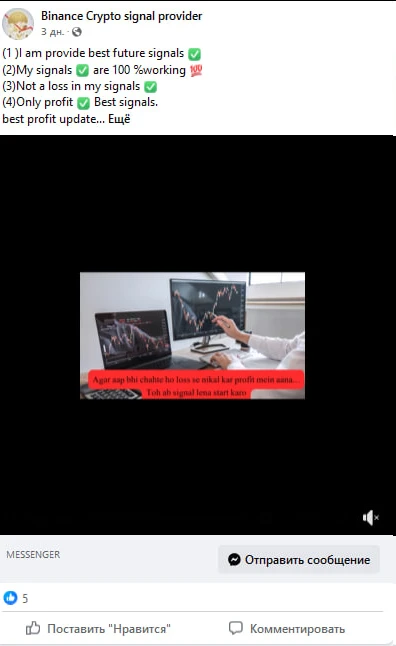
If you follow gambling trends, you’ve probably already come across signals — this was once the main trend for running traffic to crash games. Over time, methods become outdated and evolve, and now this concept has shifted to the cryptocurrency vertical. In general, all available approaches are used here with one condition: the ad creative contains a promise of fast earnings, and all the details can be found by following the link.
Examples of Funnels
The classic is Telegram channels, and this is used not only in crypto. This messenger is perfect for processing traffic that comes from sources like Facebook and Instagram. There, clients are already met with pre-prepared testimonials and withdrawal screenshots:
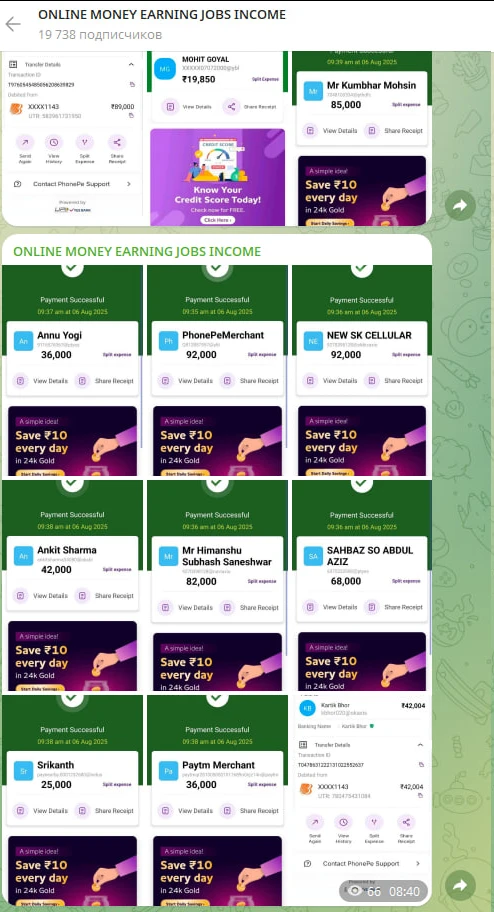
Another example of user processing via a Telegram channel where signals are distributed:
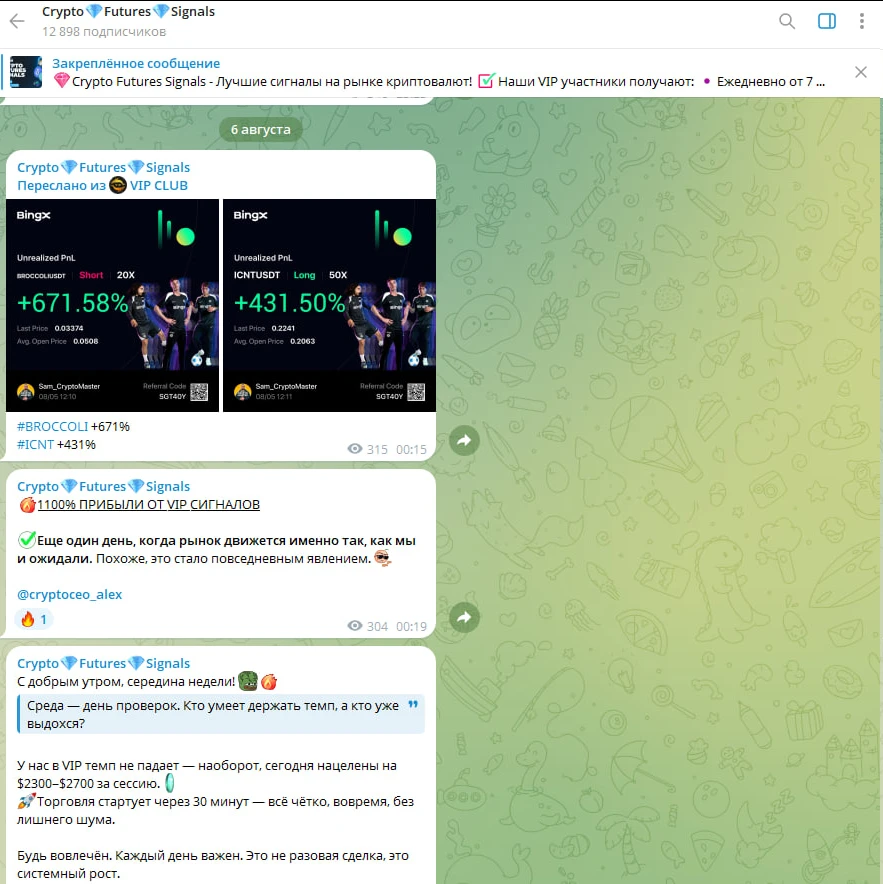
There are three fundamental funnel formats in crypto incentive traffic:
- Lead processing happens only via private chats, no channel.
- Processing is done only through the Telegram channel, no personal chats.
- Users join the channel, but handlers also communicate with them directly.
A Telegram channel is essential for high retention, but without active handlers, it’s hard to convert large volumes — most users need encouragement. The third option works best: it balances both traffic ROI and high CR.
What Advertisers Think About It
As mentioned earlier, not all advertisers are open to incentivized traffic. Some worry about low ROI, others simply avoid questionable funnels. Still, crypto offers for such a type of traffic do exist. But if you’re coming from gambling, be ready to squeeze every bit of value from your traffic: for a $200 payout, the base revenue per player might need to hit $250+.
The general trend here is low caps for newcomers that grow over time. To expand the partnership, you must show strong traffic quality early on. Only then will the cap grow from 10 FTDs to 20, 30, and more. The only shortcut might be having a fellow affiliate vouch for you — but even then, the advertiser will carefully monitor performance and raise questions after a weak first batch.
The Legal Side
Digital industries evolve much faster than state regulations. There’s no specific administrative or criminal article for this type of traffic anywhere, but this doesn’t mean you can safely run offers in any jurisdiction. Countries like the U.S. and Israel are extremely cautious about any internet fraud involving their citizens. In general, Tier-1 GEOs present increased risks for affiliates.
Just like in other verticals, such a type of traffic is often used in Tier-2 (Eastern Europe, Turkey) and Tier-3 (India, LATAM) GEOs. These countries tend to be more relaxed or inactive regarding such activities. However, one must remember that “fraud” is a flexible term, and promising easy winnings — while knowing that they likely won’t happen — could land you in legal hot water if needed. Always assess the legal risks beforehand.
Conclusion
Incentive traffic in crypto is the evolution of a method that started in gambling and quickly spread to other verticals. Such an approach to traffic offer transparent math and shift part of the responsibility from media buying to lead processing — and for small campaigns, a webmaster can handle both.
At the same time, the legality of such traffic is questionable. But the gray legal area leaves this method floating near the boundaries of what’s legal.

Ksenia has extensive hands-on experience in affiliate marketing, having worked as a media buyer and affiliate for several years across multiple verticals. Throughout her career, she managed traffic from a wide range of sources, tested funnels, and collaborated directly with advertisers and networks.
For the past six years, she has also been writing in-depth articles, reviews, and analytical guides about affiliate marketing. Her work has appeared on well-known industry blogs and platforms, where she covers topics such as traffic sources, compliance, creatives, tracking, and campaign optimization.
Today, Ksenia combines practical experience with editorial expertise, contributing as a guest expert to various affiliate marketing projects and helping educate both beginners and experienced affiliates.


